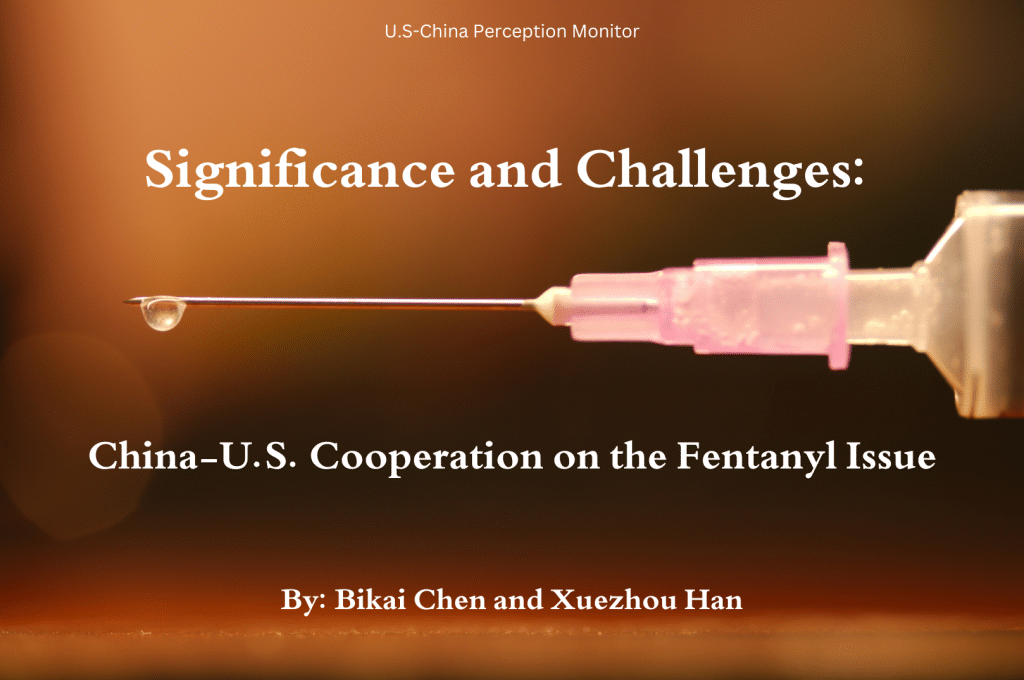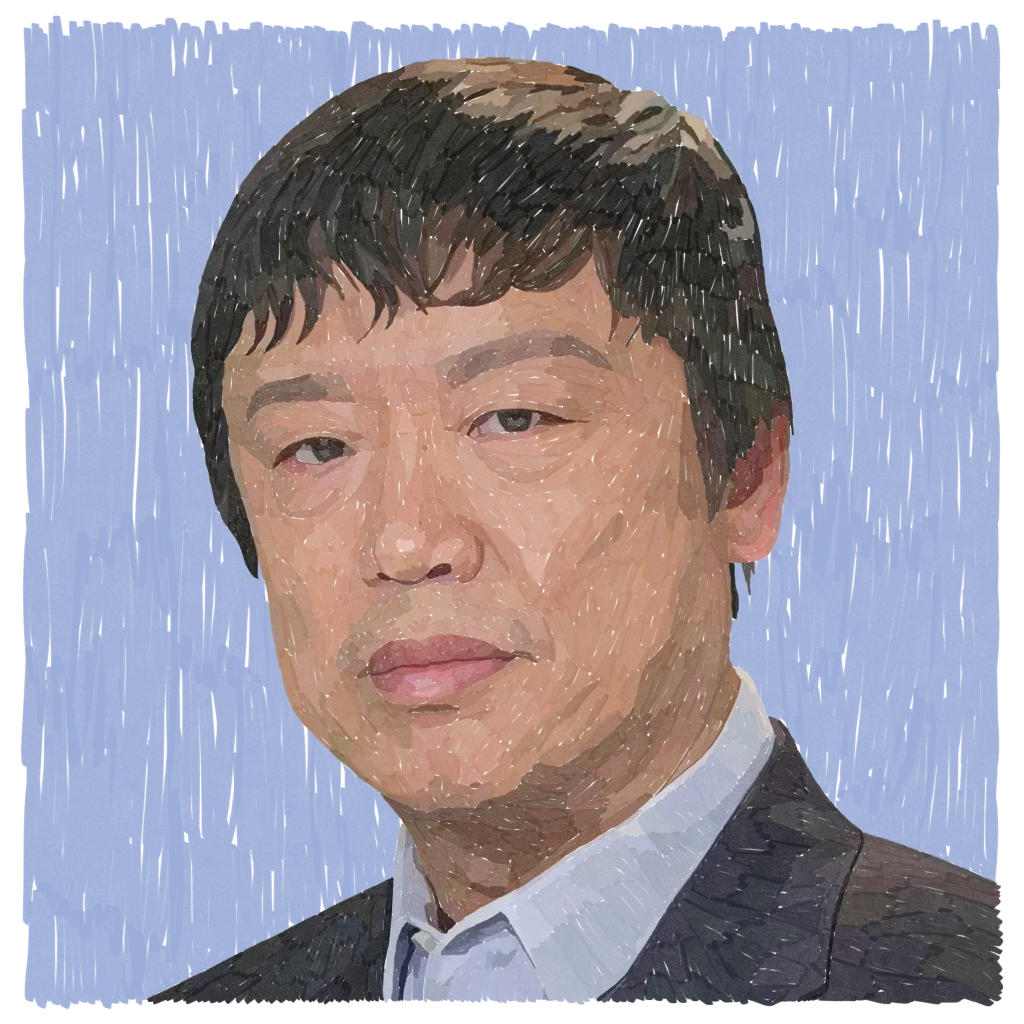Significance and Challenges: China-U.S. Cooperation on the Fentanyl Issue
The View from Beijing: America’s Mirage of ‘Strength’
Fifty years after Dr. Kissinger’s secret trip to China, the second highest-ranking State Department official of the Biden administration, Wendy Sherman, visited China. Her visit was not to discuss whether Washington and Beijing could turn a new page in the bilateral relationship, but to set up “guardrails” to prevent U.S.-China relations from trundling off a cliff. Apart from the two “lists of demands” proffered by China and the exchanges of harsh, candid criticism, the meeting provided a silver lining for détente and even cautious optimism about an eventual leader summit.
The prospect for high-stakes engagement initially seemed bleak, however, as a U.S. official described the proposed talk as one from “a position of strength,” a tit-for-tat reference to the Anchorage remarks by Yang Jiechi, director of the Office of the Foreign Affairs Commission of the CPC Central Committee. “She’ll be traveling there, as we have said, from a position of strength,” State Department Spokesperson Ned Price stated, “not unlike how Secretary Blinken met with Director Yang and other PRC officials in Anchorage on the way back from the Indo-Pacific region.”
But by the time Sherman concluded her China visit, she declared that the U.S. is not seeking conflict with China and “there are some things that rise above specific differences.”
What salvaged this talk from another fallout? What prompted the U.S. to refrain from a high-profile demonstration of this “position of strength”? Is the U.S. in a “position of strength” at all?
An American Position of Strength?
If the American “position of strength” can be taken as an indicator of the range of policy options to change others’ behavior, President Trump exhausted what strength the U.S. had by launching capricious trade war offensives and aggressive sanctions on Chinese companies. But China didn’t budge, and instead launched counter-offensives targeted at American goods.
Trump’s legacy lingers on after his departure. The Biden administration has maintained Trump’s tariff spikes, expanded the entity list of Chinese companies, sharpened criticisms of China’s policies in Xinjiang and Hong Kong, encroached upon the long-standing tacit mutual understanding on Taiwan, and rekindled the “Wuhan lab-leak” theory previously propagated by the Trump administration. Biden’s unwillingness to change course was hardly a surprise considering the fact that the bipartisan and public consensus in the U.S. has shifted against China’s favor.
However, there is a major difference between these two administrations: Biden’s team more closely examines the present China-U.S. power balance and has better knowledge of what is left of the U.S. “position of strength.”
A month before Sherman’s Asia trip, for example, President Biden was presented with a report detailing an overall check of the U.S. supply chain. His decision to order four departments to draft this report was motivated by growing concerns about U.S. reliance on foreign sources such as China in key manufacturing sectors and, more importantly, by the need to achieve American self-reliance in pursuit of further disengagement from China. With the conclusion of the 100-day review, the Biden administration’s concerns were justified.
One of the key industries studied in the report is the American semiconductor industry, which Trump used as a trump card in the technology blockade against China. Upending the convenient assumption of U.S. wholesale leverage in the industry, the report finds that U.S. semiconductor companies are highly dependent on China for continued profit growth, R&D investment and back-end sectors like assembly, testing, and packaging.
The report also finds that China is overwhelmingly the largest market for American semiconductors. In 2018, for example, U.S. mobile phone chip provider Qualcomm and memory chip maker Micron generated more than half of their revenue from China. This fact can be better understood in the context of the U.S. semiconductor industry, which alone accounts for 1.4 percent total U.S. manufacturing value added and 1.6 percent of total manufacturing employment in 2019.
While the U.S. leads in cutting-edge chip design, China dominates the global electronics assembly space. It is estimated that the U.S. share of semiconductor production capacity will fall to 10 percent by 2030, while the Asian share will grow to 83 percent.
With regard to the extent of this industry’s vulnerability to global turbulence, the report goes so far as to warn that “even a minor conflict or embargo could have immediate major disruptions to the United States and long-term implications for U.S. supply chain resilience.”
This statement soon became reality. As the U.S. chip sanctions on China kicked in, the supply chain disruption began to take its toll on global semiconductor production, which in turn hurt U.S. businesses. The impact has been felt by electronics and car-making giants like Apple and Ford, which forecast hindered production capacity. Furthermore, global economic interdependence, once championed by the U.S., has now grown to a stage where no major economy can walk out unscathed from a trade standoff. The U.S.-China Economic and Security Review Commission reported the U.S. business environment deteriorated due to the policy environment during the trade war, with FDI to the U.S. shrinking 37.7 percent year-on-year in 2019.
Even if Biden wants to resume Trump’s ambition to build an independent supply chain, he may well find the reshoring of manufacturing an unlikely scenario. In addition to market access, China remains a haven for investment due to its talent pool, unparalleled manufacturing sector, its pandemic resilience, and its robust economic recovery since Spring 2020. According to a survey by the US-China Business Council in 2020, a staggering 87 percent of U.S. companies in China reported no plans to shift production elsewhere, and only 4 percent expressed their intention to relocate back home.
The U.S. economic interlink with China has limited Biden’s policy choices to contain China. Recently, over 30 influential business groups in America, ranging from retailers, chip makers, farmers and others, called on Biden to reverse his predecessor’s tariff-slapping approach against China. The mounting dissent among the domestic business community sends a signal: the charade of uncontested U.S. economic superiority, used by Trump to bully China, is about to unravel itself. That imagined “position of strength” is gone.
Rebuilding American Strength by Rallying Against China?
In response, the Biden administration has recalibrated its policy approach towards China to strengthen its position. It has sought to bolster American transatlantic links and traditional alliances. However, the U.S. and its allies are divided on how to approach China, and not just because they hold grudges over Trump’s abrasive actions. This further calls into question the American “position of strength,” formerly underscored by its global leadership.
Despite Biden’s effort to rally the G7 against China, German Chancellor Angela Merkel still made it clear that “China is our rival in many questions but also our partner in many aspects.” French President Emmanuel Macron also reiterated that “the G7 is not a club hostile to China,” and urged more cooperation with Beijing. As Chinese President Xi Jinping urged “real multilateralism” at a virtual summit with these two European leaders in July, Merkel and Macron reaffirmed Europe’s expectations about access to the Chinese market, and looked forward to China’s cooperation on climate, biodiversity, and fight against COVID-19.
It is firmly evident that American allies in Europe are hesitant about joining an anti-China coalition, which suggests its even less likely for countries in other regions to do the same. According to a report by McKinsey Global Institute, the world’s economic exposure to China has been significantly increasing and to the U.S. declining over the past two decades. Through the present, China has become the largest trading partner of over 120 countries. Most of them are inclined against sacrificing their own economic interests in favor of a U.S.-aligned adversarial posture towards China.
In Southeast Asia, for example, Dino Patti Djalal, former Indonesian ambassador to the U.S., expressed the hope that Biden administration will lower the tension of U.S.-China relations and keep the rivalry manageable. Regarding Biden’s call for value-based partnership, he said, “not a single ASEAN country has echoed the U.S. State Department’s claim that China is committing ‘genocide’ against Muslims in Xinjiang,” not even Indonesia, the world’s most populous Muslim country. Such sentiments against an ideological bloc and a modern-day Continental System are widely shared in the developing world.
Across the past four years, the world has witnessed dwindling U.S. political and economic capital worldwide due to Washington’s myopic global strategy and disorganized policy behavior. When Biden announced to the world “America is back,” what it came back with was an ambition to keep China in check, but not necessarily a “position of strength.”
As is argued by Graham Allison, the scholar who contended that the U.S. and China are caught within “Thucydides’ trap,” the U.S. role in the world today, in the eyes of many policymakers, is inflated by its triumphant ascendance in the wake of the Cold War. Reality has now changed, and what once was the American position of strength is now a mirage.
Amid the deteriorating spiral of bilateral relations, Sherman’s visit to China was a minor diplomatic thaw and acknowledged the pressing need for conflict management. Perhaps the U.S. is waking up to reality. It is a small step for China-U.S. relations, but it could be a big step for the U.S. rethinking its position amidst the shifting global power balance.









